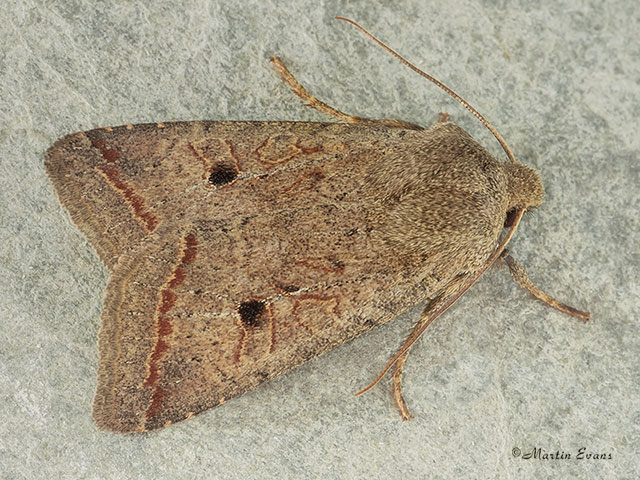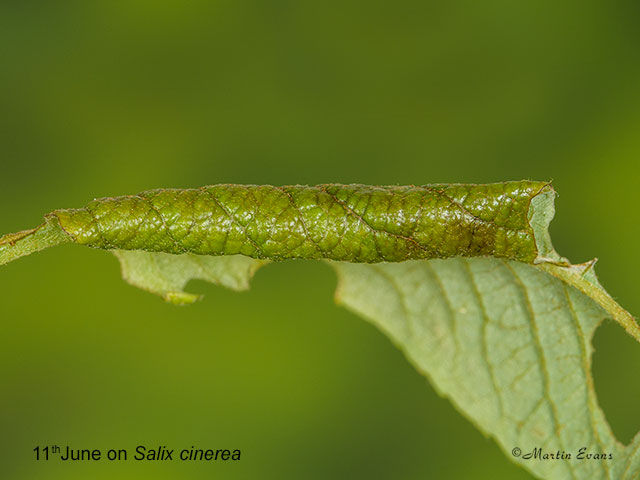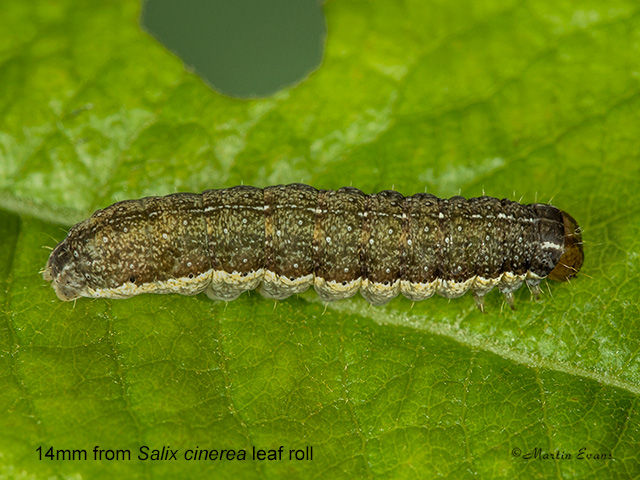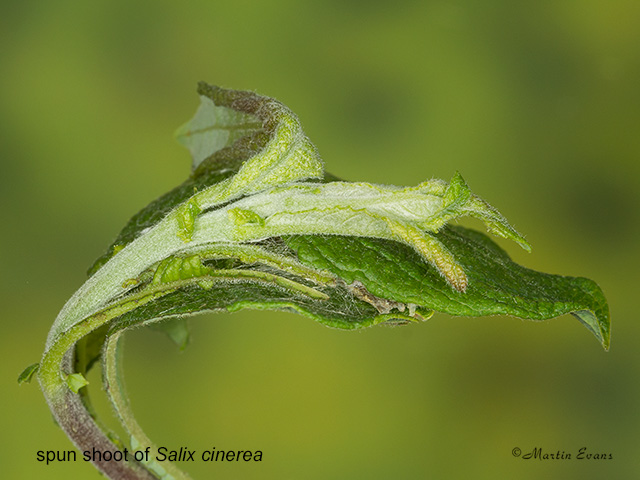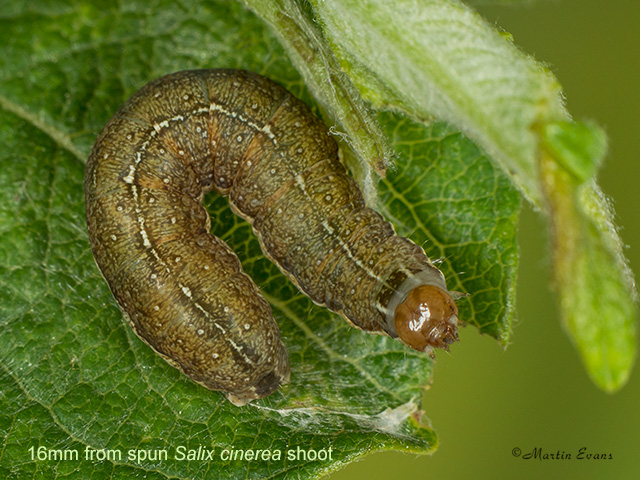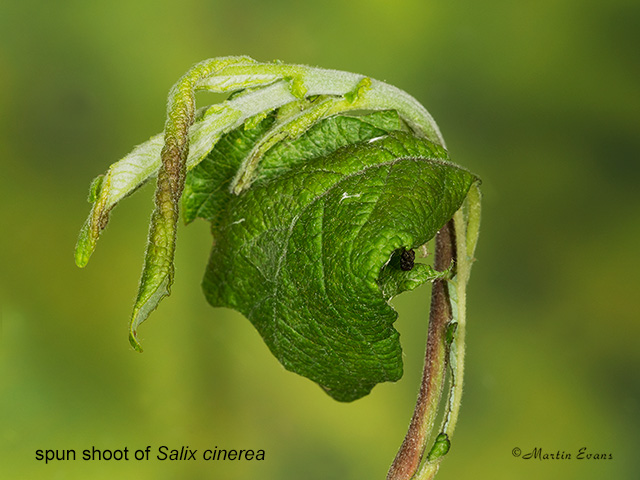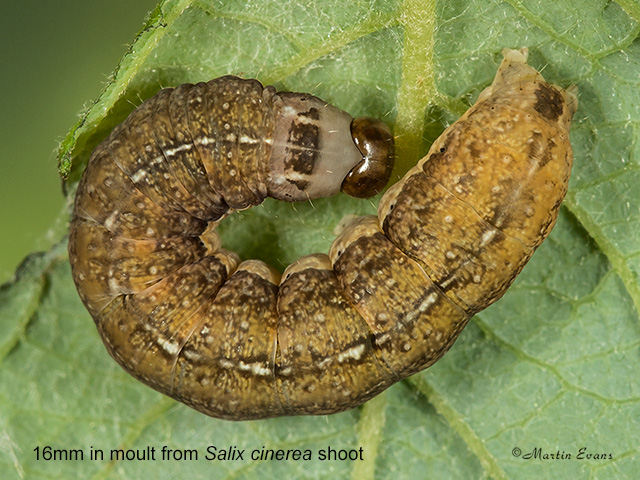Noctuidae
73.189 Red-line Quaker Leptologia lota (Clerck, 1759)
Common
Similar species: The grey to grey-brown forewing with a red outer-cross-line is enough to separate this moth from other British or Irish species.
Forewing: 15 to 18mm
Habitats: Woodland rides and clearings, scrub, carr, hedgerows, heathland, marshes, fens and gardens.
Habits: The moth visits over-ripe blackberries and Ivy blossom. It is attracted to sugar and light.
Foodplant: The larva feeds at first on catkins of Grey Willow, other sallows and occasionally poplars. When larger it feeds from a spun terminal shoot and then from between spun leaves. The full-fed larva constructs a soil-covered cocoon under the earth where it rests until it pupates up to six weeks later.
On the European mainland it has also been recorded feeding on Alder.
